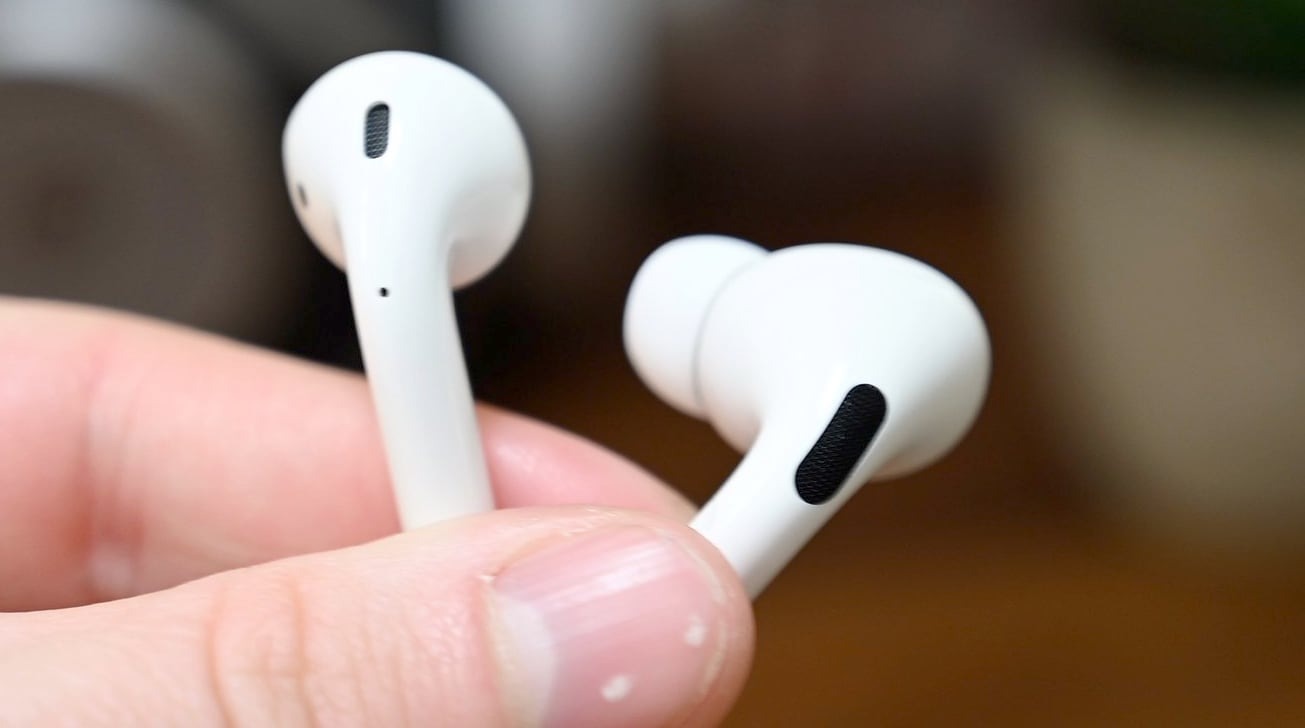
A future iteration of AirPods could take advantage of bone conduction technology to provide audio in a variety of situations where normal headphones are ineffective, with a proposed system that combines bone conduction with normal air-based sound transmission.
Over the years, bone conduction has been a way for people to listen to music or receive phone calls using headphones, without relying on headphones. Instead of transmitting sound through the air, bone conduction devices contact specific points on a user’s head, sending sound to the skull and ear, where vibrations translate into sound.
Such systems have their benefits, for example, by allowing the ear canals to be free and allowing users to hear their surroundings at the same time as the audio from the device. It is also useful in some cases where there is damage to the ear that prevents the normal use of headphones or earphones. It also helps in situations where air-based methods like speakers fail, such as if a user is underwater.
There are some drawbacks in bone conduction that limit its usefulness, the first being its ability to work at high frequencies. While human hearing generally ranges from 20 Hertz to 20,000 Hz, bone conduction is only really effective at levels below 4,000 Hz, with audio quality deterioration in higher Hertz ranges.
The fact that it needs head contact is also a problem as it can tickle the user at high intensities making it uncomfortable to wear.
In a patent issued to Apple on Tuesday by the US Patent and Trademark Office titled “Multipath Audio Stimulation Using Audio Compressors,” Apple suggests that problems with bone conduction could be alleviated, in part through support. of standard air conduction methods.

An example of a headphone that incorporates bone conduction with normal headphone use.
The plan involves two general areas of attack, covering audible ranges and compression.
Audio signals are filtered into three categories, consisting of high frequency components, medium frequency components, and low frequency components. The low and mid frequency components are processed with compressors to reduce the dynamic range and then combined into one combined component.
This combined signal is sent through the user’s skull via bone conduction, because it consists of low and medium frequency signals within its useful range. The high-frequency component, which would be ineffective when sent through bone conduction, is sent through the air to the ear in the normal way.

Both bone conduction and a combined speaker could cover a full audio range for the user.
Apple suggests that the air conduction system be built in such a way that it does not block the ear canal from other audio sources, that is, it still allows the user to listen to the environment.
The result is a system in which the user has the benefits of bone conduction over the ambient audio, while receiving the benefits of the full audio range by receiving high-frequency sounds through another method. In cases where surround audio can drown out high-frequency sound, users would still receive the low and mid-frequency signals through bone conduction.
The presentation lists its inventor as Tomlinson Holman, and it was initially introduced on May 25, 2018.
This is not the first time that Apple has considered using bone conduction technology. The 2014 and 2015 patent applications indicate that he was investigating wireless headphones using bone conduction. Despite years of work, Apple has yet to introduce any type of bone conduction product, but the existence of its AirPods line seems to be a suitable candidate for the use of technology.
.